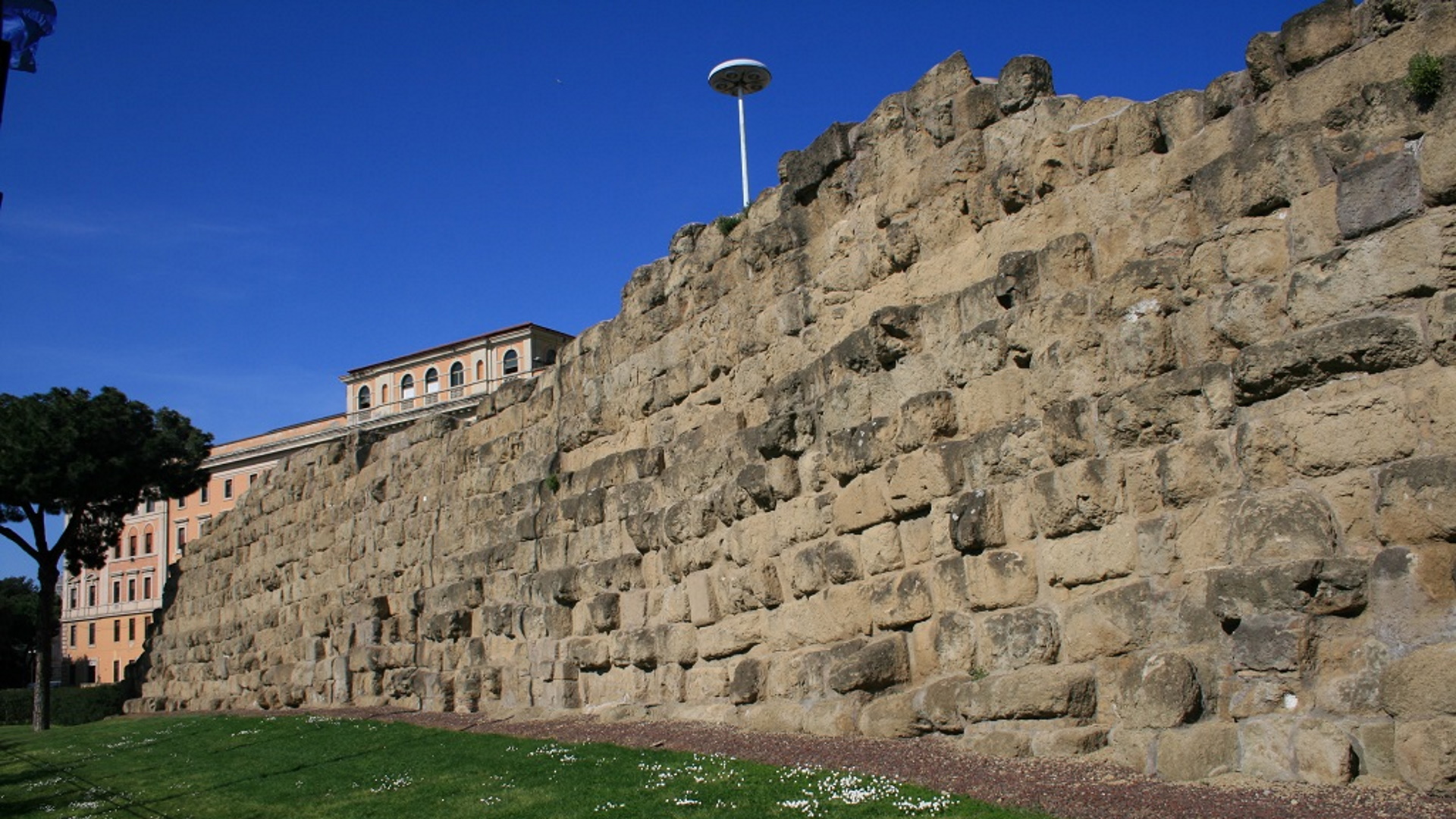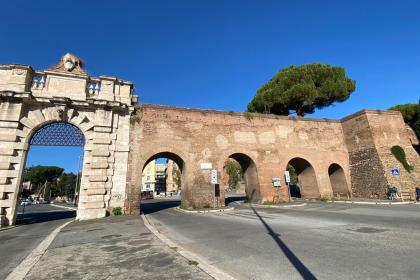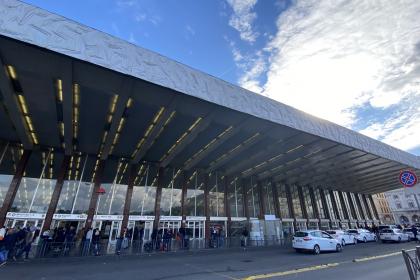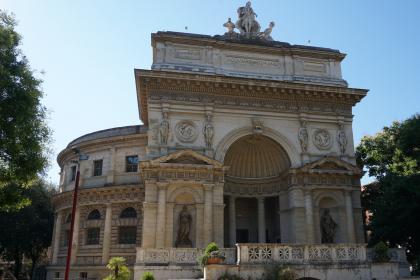
Built in all probability during the mid-sixth century BC, the Servian Walls take their name from the sixth king of Rome, Servius Tullius.
The walls visible today date to the mid-fourth century. They were built after the Gallic invasion of 390 BC, during which the defenses of the city had proved insufficient.
The tuff coming from the caves of Grotta Oscura, exploited by Rome after the conquest of Veio in 396 BC, was used for their construction. The walls were restored during the Second Punic War (late third century BC) and the civil war between Mario and Silla (87 BC). The blocks form a wall about 10 meters high and 4 meters thick for a total length of almost 11 kilometers interspersed with about 12 doors. Of these, only two are visible: the Porta Esquilina near Via Carlo Alberto (Arch of Gallieno) and the Porta Caelimontana near the church of Santa Maria in Domnica (Arch of Dolabella and Silano). Some sections incorporated a deep ditch, or moat, in front of it as a means of effectively elevating the wall during attacks by invaders. A defensive ramp called Agger protected the weaker portion of its northern perimeter. It consisted of a mound of earth piled up along the interior side of the walls to thicken it. It also gave the defenders a base to stand on while repelling any attack. Defensive war engines, including catapults, also equipped the wall.
In the photo, you can see the imposing section of the wall in Piazza dei Cinquecento, next to the exit of Termini Station. From here, the most fortified point started. It included a moat and an Agger. You can see other remains of the Agger at the Acquario Comunale in Piazza Manfredo Fanti.
Sections of the Servian Walls are still visible in various parts of Rome. The largest one is that in Piazza dei Cinquecento. Another impressive wall is on the Aventine Hill. It also incorporates an arch for a defensive catapult dating from the late Republic. You can see other parts of the walls in the Auditorium of Maecenas and on largo Magnanapoli. Inside Palazzo Antonelli, you can see an arch for catapults. Other remains are in Via Salandra and Via Carducci.
The walls persisted even at the end of the Republic and the beginning of the Imperial Age. The walled defense became unnecessary as Rome felt well protected by the ever-expanding military might of the Republic and the subsequent Empire. As the city continued to grow and prosper, it remained essentially wall-less for the first three centuries of the Empire. When the barbarians attacked Rome in the 3rd century, Emperor Aurelian built the great Aurelian Walls.
Photo: Sovrintendenza Capitolina ai Beni Culturali
The Aurelian Walls

 Condividi
Condividi
Roma Termini railway Station

 Condividi
Condividi
House of Architecture at the Roman Aquarium

 Condividi
Condividi
Information
 Condividi
Condividi
Location
To find out about all accessibility services, visit the Rome accessible section.











































